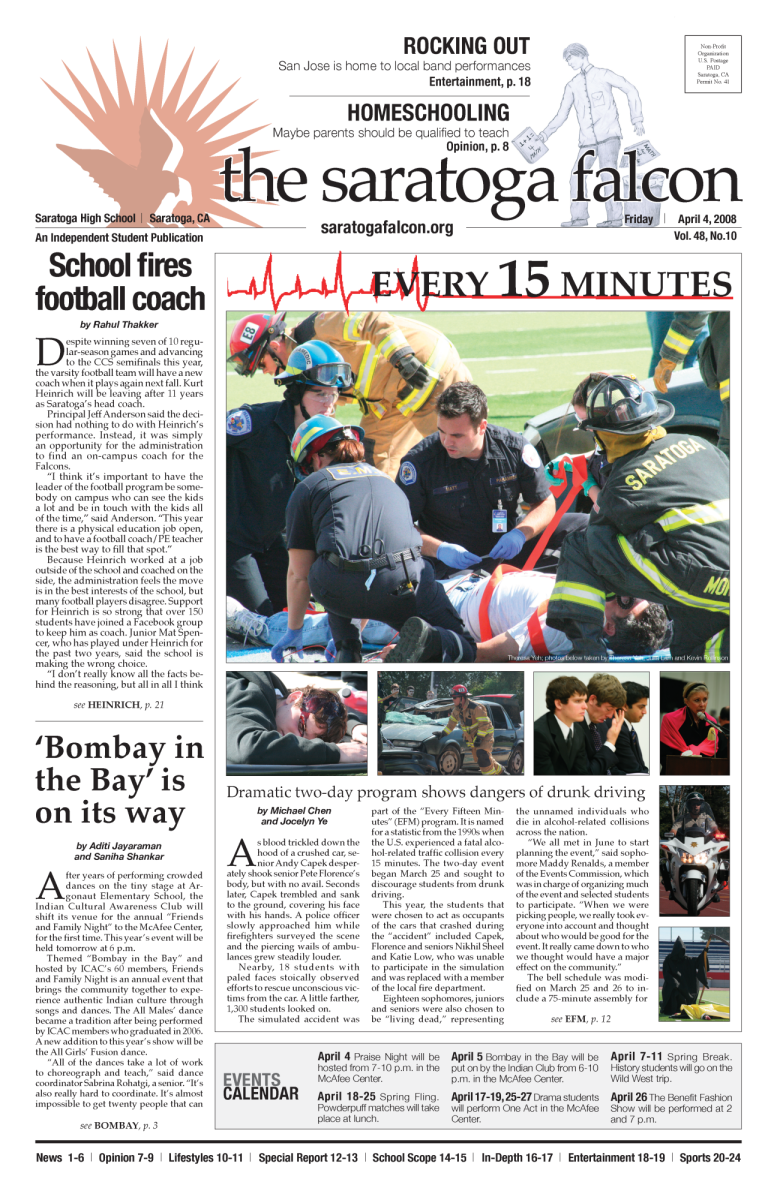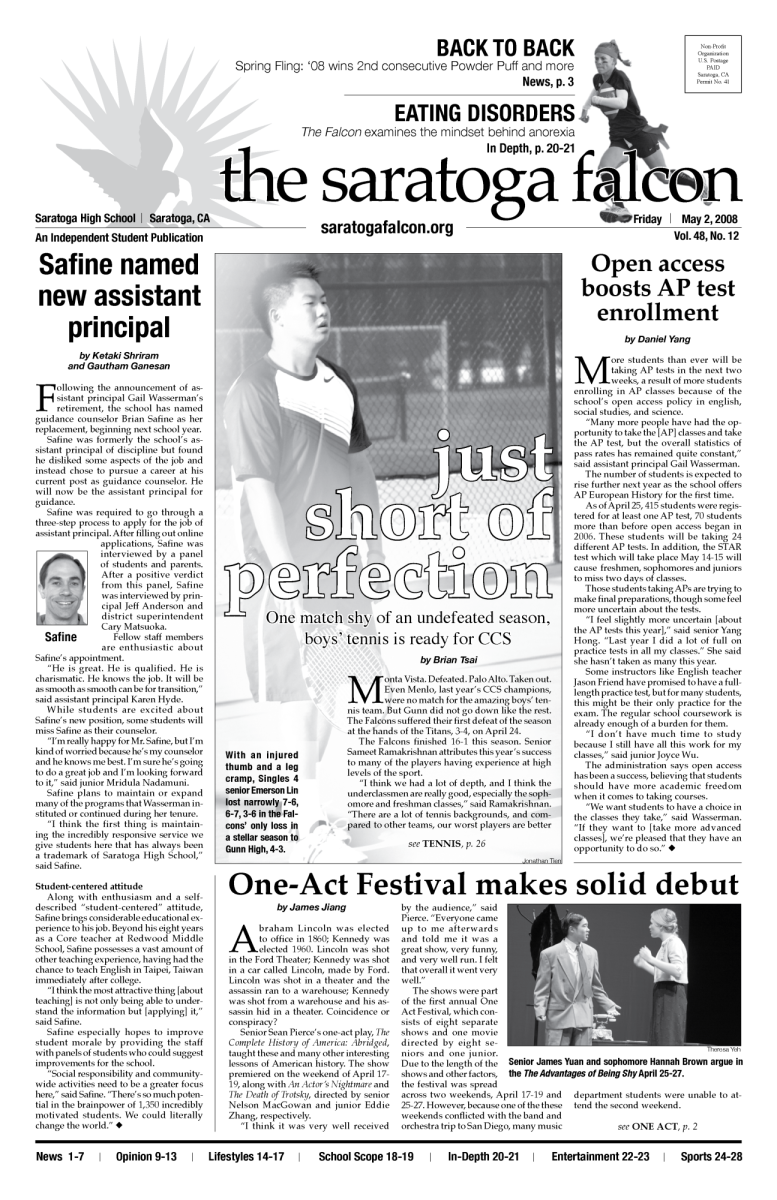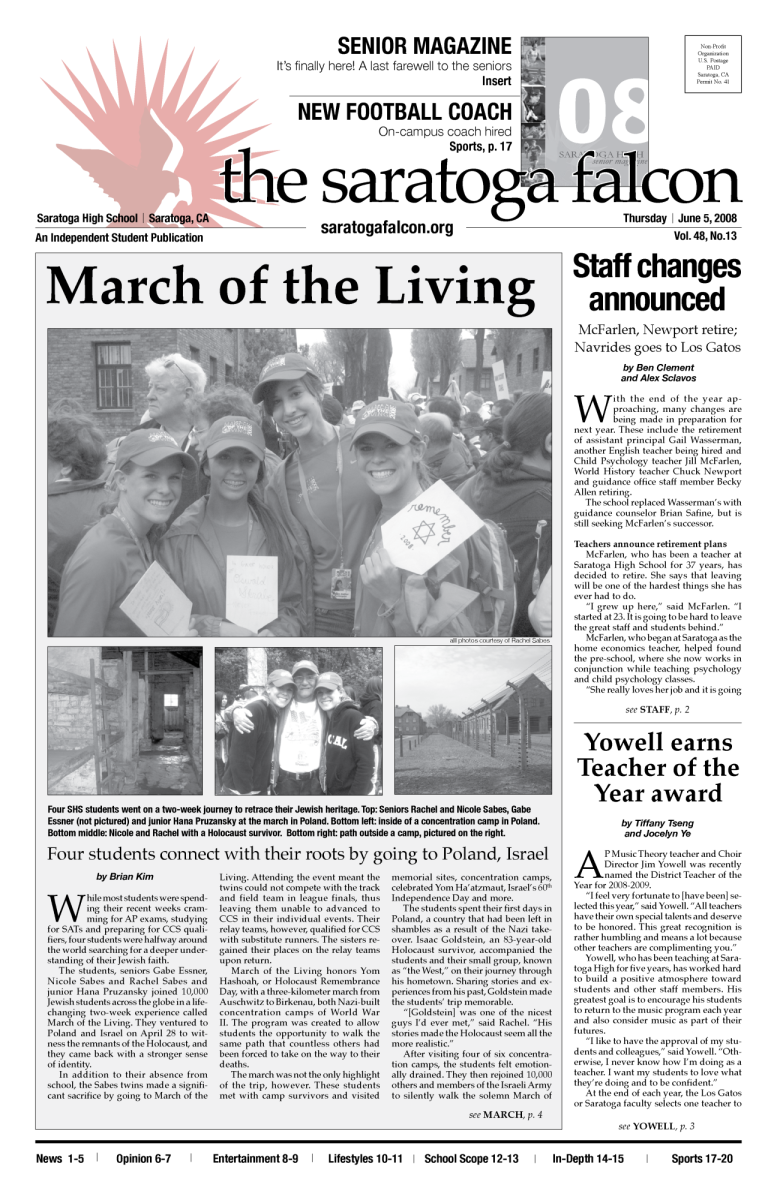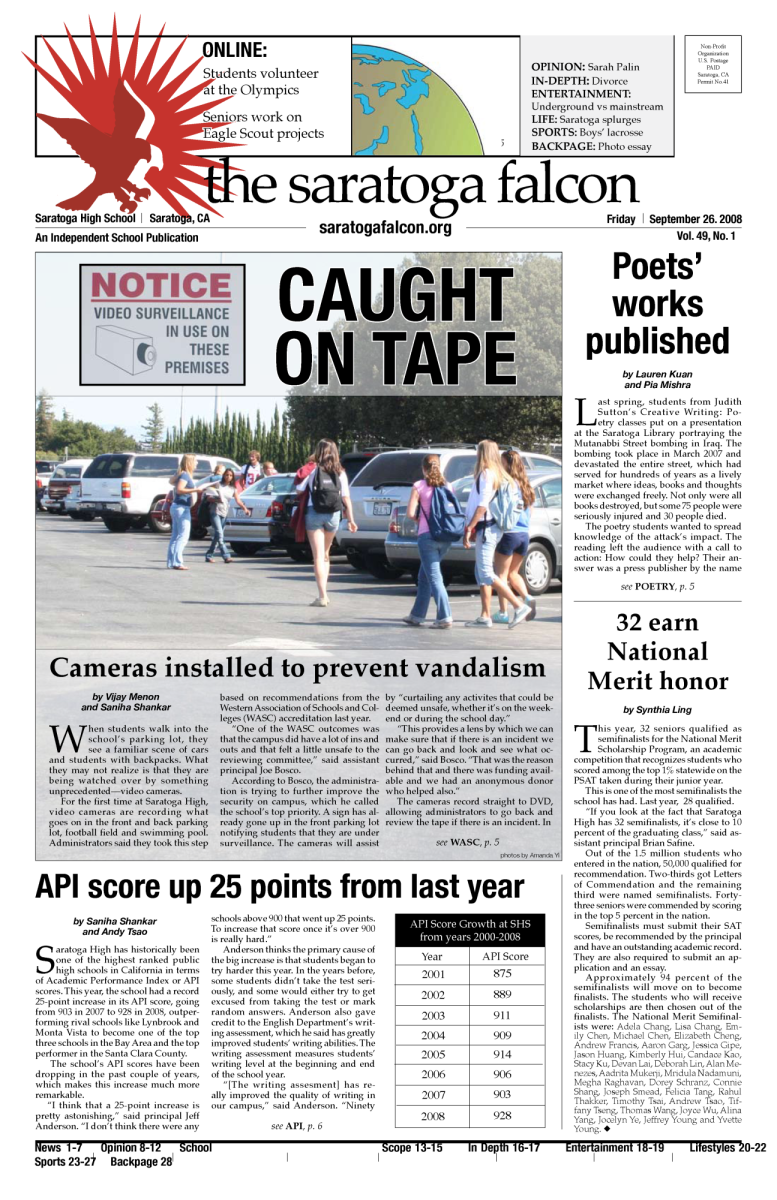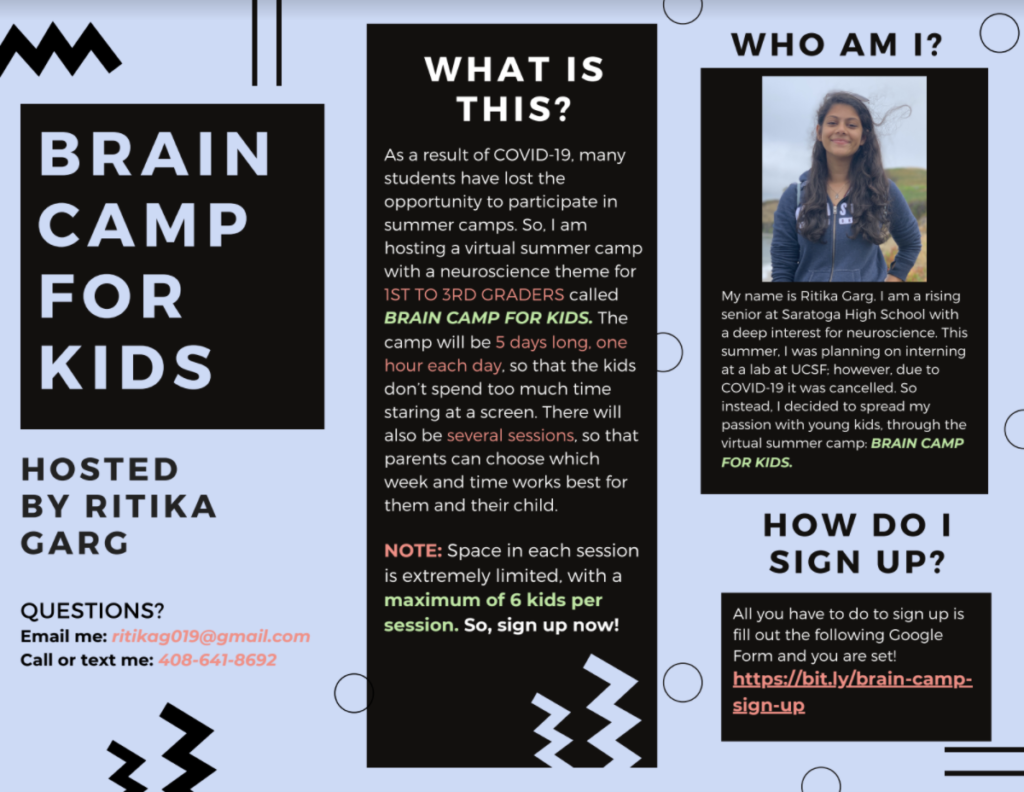After the cancellation of her research assistant internship at UCSF due to COVID-19, senior Ritika Garg refused to let her disappointment prevent her from pursuing her interest in neuroscience over the summer.
Upon hearing her friends and family express concern over keeping their younger children engaged during shelter-in-place, Garg decided to host a neuroscience camp for first to fourth grade students.
“After coming up with the original idea, there were obviously a lot of logistics I had to figure out,” Garg said. “I had never actually done any teaching before, and I also had to create the advertising and activities.”
Although word-of-mouth was her biggest marketing strategy, Garg also sent out a brochure and interest form on the Nextdoor to spread the word.
While advertising, Garg hosted a trial camp for her family friends in order to experiment with different activities and ensure that Zoom ran smoothly. After testing out different lesson plans, she kicked off her week-long camp sessions during the last week of June. Each session was one hour.
Garg was pleasantly surprised to see the wide range of cities that her students were from. Her group of elementary school students were from all over the Bay Area, from Saratoga to Fremont.
“It was really cool to see such a mix of kids of different ages and backgrounds,” Garg said.
Although she initially planned to host five summer camps, she ended up hosting nine sessions with five to seven students in each session due to the increase in signups. For the first two weeks, she hosted a morning and an afternoon session, totaling to four sessions per week. When college applications began taking up more of her time, Garg decided to do one session per week, ending the camps in August.
To make the camp as engaging as possible, she planned various activities such as coloring worksheets that explain a concept, short YouTube videos, facts of the day, neuroscience-themed board games and experiments.
One experiment Garg and the students did involved an egg and a box to show the importance of cerebrospinal fluid, a clear fluid surrounding the brain and spinal cord.
To do this, Garg demonstrated putting an egg in the box and then shaking the box to show that the egg would crack without the cerebrospinal fluid. Then, she and the students would do it again, where they put water with the egg in the box. The egg wouldn’t crack when they shook the box with water. The egg represented the brain, and the box represented the skull, showing how cerebrospinal fluid (water) protects the brain.
The students enjoyed doing this activity because they got to violently shake a box, Garg said. She tried to focus on activities like this experiment as the students enjoyed them being so hands-on and visual.
Every day, Garg would also play a song about different parts of the brain. Students would listen and read the lyrics and try to memorize the lyrics of part of the song. By the end of the camp, they learned the entire song.
Because Garg didn’t want to host a formal class, she decided to assign no homework and make it mostly fun and interactive. Moreover, she wanted to give parents’ a break from managing their children, so she made the camp as independent as possible.
“One really important thing to me was that I wanted to be able to hear the kids’ voices as much as my own voice,” Garg said. “Even though I was the teacher, I wanted to be able to get to know them, even if only for a week.”
At the end of the camp, Garg asked the families to make a voluntary donation of $25. She raised $1,340, donating to a Bay Area nonprofit called Get Us PPE.
After reflecting on the camp, Garg thinks her summer was better spent as an instructor at the camp than if it would have been in the lab.
“I really got to understand the power of mentorship, because when I was in the lab, I was the mentee, and my mentor was coaching me, but this way, it was a role-reversal,” Garg said. “I was definitely influenced because I understood the power of teaching and how much you can learn by teaching.”
























